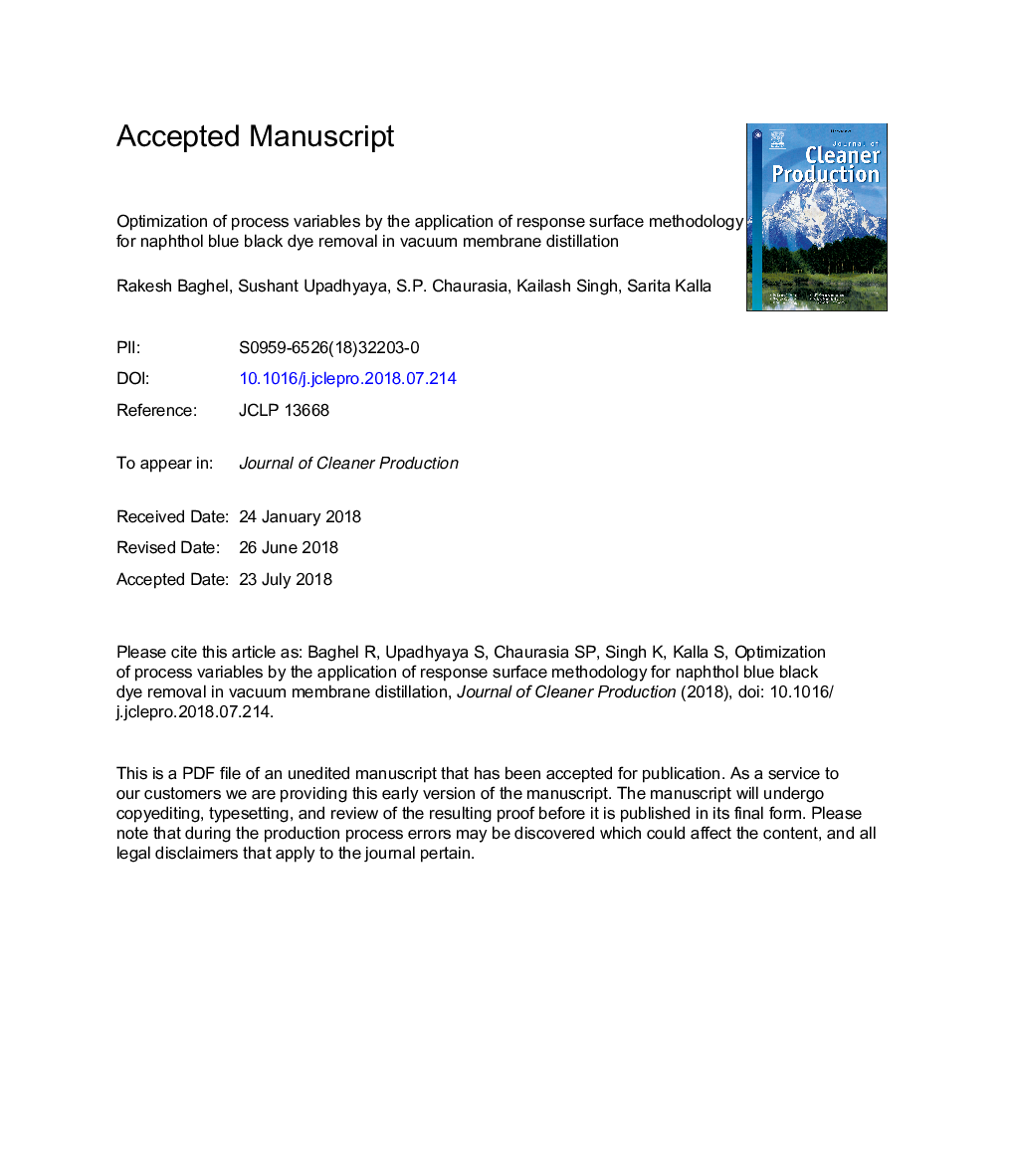| Article ID | Journal | Published Year | Pages | File Type |
|---|---|---|---|---|
| 8093329 | Journal of Cleaner Production | 2018 | 41 Pages |
Abstract
This study focuses on the determination of optimum conditions for different operating variables for removal of dye from wastewater in the vacuum membrane distillation process. Response surface methodology was applied to develop a regression model for analysis of permeate flux, specific energy consumption, and percentage removal. A set of experimental runs for VMD setup was developed using the central composite design of experiment method. Three regression correlations models were developed to predict the permeate flux, specific energy consumption and percentage removal using experimental conditions. The developed models were further used to optimize the operating parameters for desired conditions of responses. The optimum conditions for operating parameters were found as 85â¯Â°C, 5lpm, 30â¯ppm and 750â¯mmHg for feed temperature, feed flow rate, initial dye concentration, and vacuum degree for maximum permeate flux and percentage removal and for minimum specific energy conditions. The developed model was verified with experimental conditions and found as best fitted. The fouling on membrane surface was analyzed using scanning electron microscopy (SEM) and EDS.
Related Topics
Physical Sciences and Engineering
Energy
Renewable Energy, Sustainability and the Environment
Authors
Rakesh Baghel, Sushant Upadhyaya, S.P. Chaurasia, Kailash Singh, Sarita Kalla,
